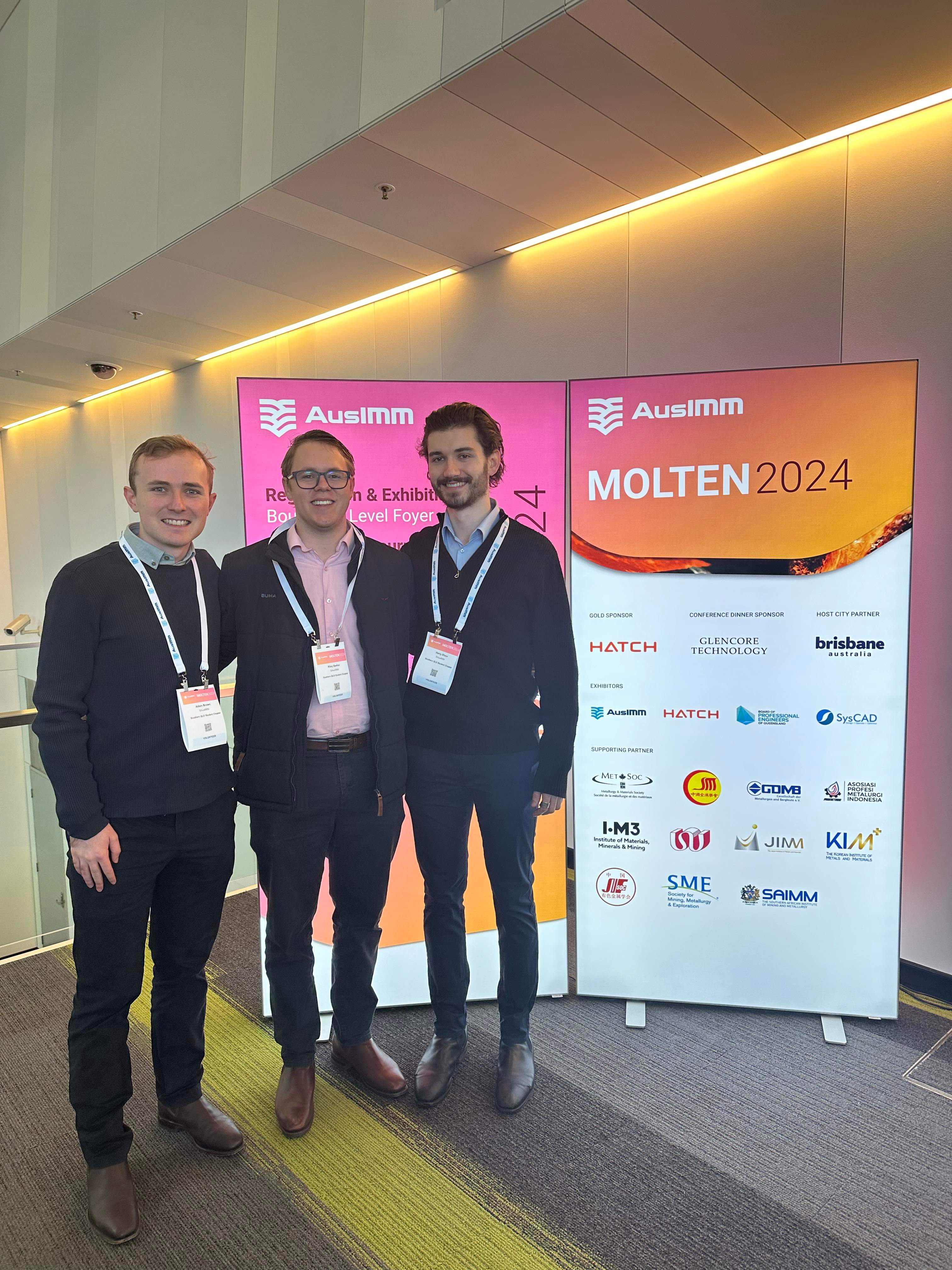Student Journal - The Southern Queensland Student Chapter at MOLTEN 2024
As a civil and mining engineering student, the opportunity to attend MOLTEN 2024 and be exposed to an abundance of insightful keynotes on complex metallurgical topics and the like, delivered by experts of industry, research and academia, was a privilege.
Of particular interest and value to me were the presentations on steelmaking. As a recent First-Year Intern at BHP, where I had the opportunity to gain an introduction to the extraction and processing of metallurgical coal, I was eager to expand my knowledge of this technical aspect of the steelmaking value chain.
Even as someone beginning my journey in this industry with limited process engineering vocabulary, the clarity with which these highly technical presentations were delivered allowed for many takeaways. In particular, Professor Geoffrey Brooks’ keynote address on “Recent Advances in Understanding Phosphorus in Oxygen Steelmaking” clearly highlighted the importance of phosphorus removal in this process and the notorious difficulty in understanding it. He elucidated how differences between results measured in experiments on phosphorus removal can vary from those typically observed in industry. Additionally, recent models by Urban, Rout, and their co-workers have made substantial progress in helping industry professionals understand the reasons behind these discrepancies. I was intrigued to hear Brooks’ conclusion that a lack of plant data on specific parts of the steelmaking process is a key limitation to further developments. For me, this emphasised the importance of having data-collecting technology installed across processes in the mining value chain to enable industry professionals to create more accurate models and generate solutions to efficiency problems more quickly.

It was also inspiring to see the level of international collaboration demonstrated by the presenters and conference attendees. With experts from various nationalities, professional backgrounds, and perspectives working on some of the most challenging problems in molten slags, fluxes, and salts, it will be exciting to witness the improvements in processing efficiency in the years to come.
My participation in the 12th International Conference for Molten Slags, Fluxes, and Salts was only possible due to the generous support of AusIMM. Thank you for granting me this mind-opening and curiosity-provoking opportunity. I look forward to further engaging with AusIMM through the Southern Queensland Student Chapter and beyond. I highly recommend that all students interested in the resources industry and studying related degrees get involved.
